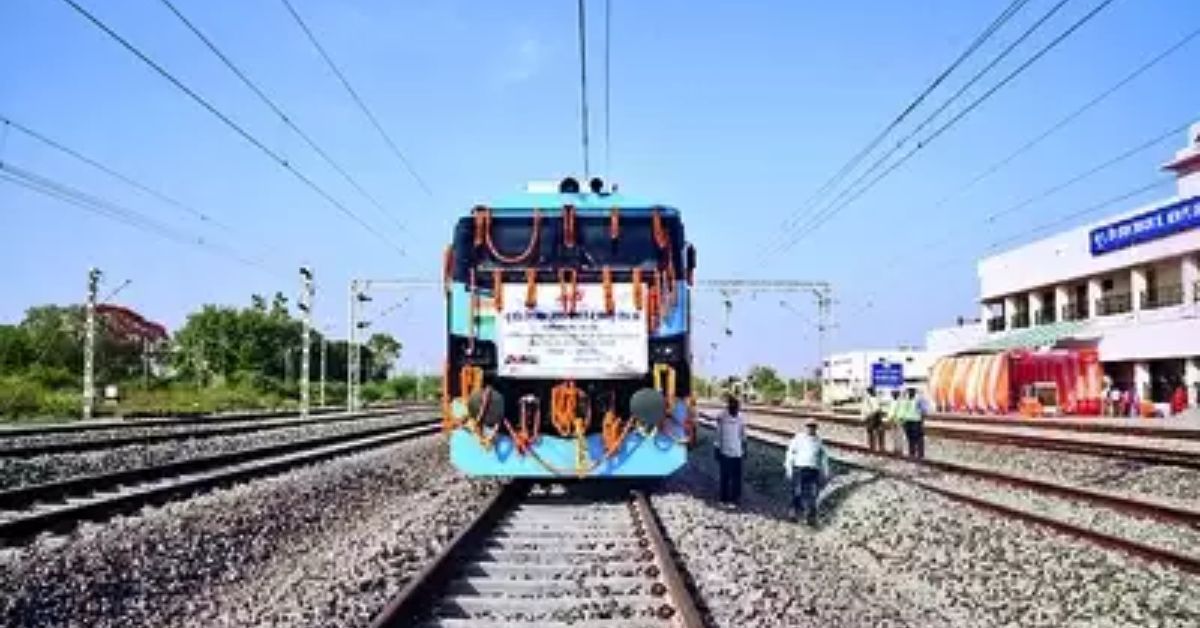Anil Saini, Managing Director, Rolling Stock & Components at Alstom India said, “We (Alstom) calculate the average speed of locomotives while including waiting time and stop times as well, we have seen our locomotives reach maximum speeds of around 115 km per hour on the Western DFC but the average speed is still around 40 km per hour.”
According to the Indian Railways, goods trains on the rail network run at an average speed of 24 km per hour, but during the lockdowns in 2020 and 2021, some zones managed to double their speeds.
Over the last 18 months around six zonal railways have registered average speed of freight trains even above 50 km per hour.
However, it is to be seen if these speeds are maintained when restrictions are removed on passenger services.
Saini added that while the increasing speed of locomotives on the Western and Eastern DFCs has helped lower cargo movement time in India, a lot still needs to be done to reach the average speed goals of 75 km/hour average speed set by the Indian Railways.
The Indian Railways needs to install electric fencing around DFCs to prevent the slowing down of trains due to blockages, adopt digitisation, reduce maintenance and repair times, and set up more maintenance depots to speedily address technical faults on trains.
“In all foreign countries DFCs are well protected to not mitigate the speed of locomotives plying on them, similar systems and measures need to be adopted in India as well,” Saini said.
Locomotive ramp-up
He added that along with measures to improve the performance and speeds of locomotives on DFCs the Indian Railways needs to address availability issues of locomotives to facilitate faster movement of goods.
“The Indian Railways wants to increase cargo movement through rail from around 1,500 million tonnes at the moment to 3,000 million tonnes by 2030. To do that they need to also increase the number of locomotives and as more locomotives are available for use, time wasted due to engine failures, maintenance issues will fall thereby increasing speeds,” Saini said.
He added that at the moment the Railways operates around 7,000 locomotives for cargo movement, including a mix of electric and diesel locomotives.
Saini said that predicting the exact number of locomotives required by the Indian Railways to achieve its ambitious goal of transporting 30 million tonnes of cargo by 2030 is challenging. However, he expected the government to issue locomotive procurement orders in the next 2-3 years.
“Indian Railways can manufacture around 1,000 locomotives per year at their dedicated facilities and Alstom can manufacture around 100 locomotives per year. To double the cargo handling, the government will have to come out with a comprehensive roadmap soon,” Saini said.
India’s ambitious DFC has reached 80 percent completion, with the Railways aiming to complete the project by June 2024.
The DFC game changer
The DFC, once fully operational, is expected to be a game-changer for India since at present freight trains are made to wait for passenger trains on common rail lines, not an ideal situation for a fast-growing economy that aims to become an industrial superpower.
For example, as of now, freight trains from Mumbai take three days to reach Delhi. Once all sections of the DFC are complete, the duration will be reduced to 48 hours. The average speed of a freight train is 20 to 25 km per hour as of now. With the DFC, this would go up to 60 km per hour, government officials said.
On an average day, around 140 trains ply the Eastern Dedicated Freight Corridor carrying items ranging from coal, steel, and iron to food grains.
The DFC covers nine states, spans 77 districts and involves approximately 11,000 hectares of land acquisition. Although it was given the go-ahead by the Union Cabinet in 2006, the project saw huge delays due to land acquisition problems and cost overruns.
The Dedicated Freight Corridor Corporation of India (DFCCIL), in the first phase of the DFC project, is constructing the 1,504 route km of the Western DFC and 1,856 route km of the Eastern DFC.







